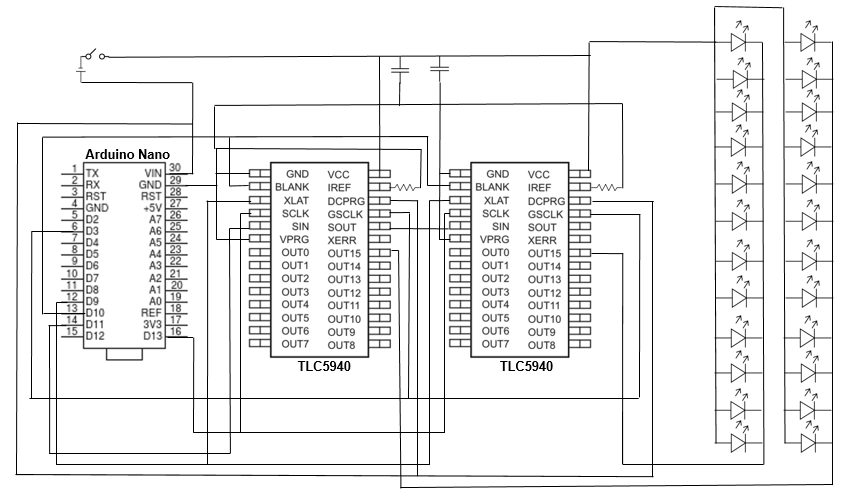February 9, 2018
Posted by Xiaoyue Li on Friday, February 9, 2018 in Uncategorized.
This week, the electronics team (Judy and Khairah) have designed a circuit using single-color (red and blue) LEDs. Khairah has made a circuit diagram for this system.

Figure 1. Khairah’s circuit schematic for single-color LEDs.
The electronics team plans to use this schematic to ensure that our Arduino code effectively executes the blinking command. Additionally, the circuit schematic for single-color LEDs uses two LED drivers so that we can better understand how to implement them in our RGB LED circuit. We will then modify our current design for RGB LEDs. Judy and Khairah have researched RGB LED circuit designs. We are planning to use three LED drivers for our 24 RGB LEDs to conserve space. We have researched the appropriate components for our design, and have submitted order forms for these components.
The housing team (Anna and Sophie) reworked the perimeter dome design using Autodesk Fusion 360 and created two versions of the design. One included the enclosing walls seen in last week’s iteration of the design and the other included only the dome portion.

This version of the perimeter dome has walls surrounding an opening at back that would be fitted onto the lenses of a VR headset. The dome itself is around 7.5 cm in diameter.

This version of the perimeter dome lacks walls and would be mounted inside the empty chamber of a VR headset so that it can be seen by a patient wearing the headset. The dome itself is around 7.5 cm in diameter.
Based on the circuit design created by the electronics team using RGB, we predict that a typical VR headset will be unable to fit two perimeters and their corresponding electronics. Consequently, Sophie and Anna are looking into ways to create a system that allows the perimeter to move from eye to eye. Additionally, we purchased a VR headset in order to better understand the logistics of fitting the electronics and the miniature perimeter into a limited space.
The chosen VR headset was created by the company Teponin. We selected this particular headset because of its already built-in adjustability and openness of its inner compartment. The pupil distance, distance between the lenses, and the object distance were all adjustable using knobs on the outside of the headset. The compartment where the phone would normally be placed is simply partitioned by a single dividing piece of plastic, leaving a lot of space for us to be able to fit the dome and other components. This headset can be found here.